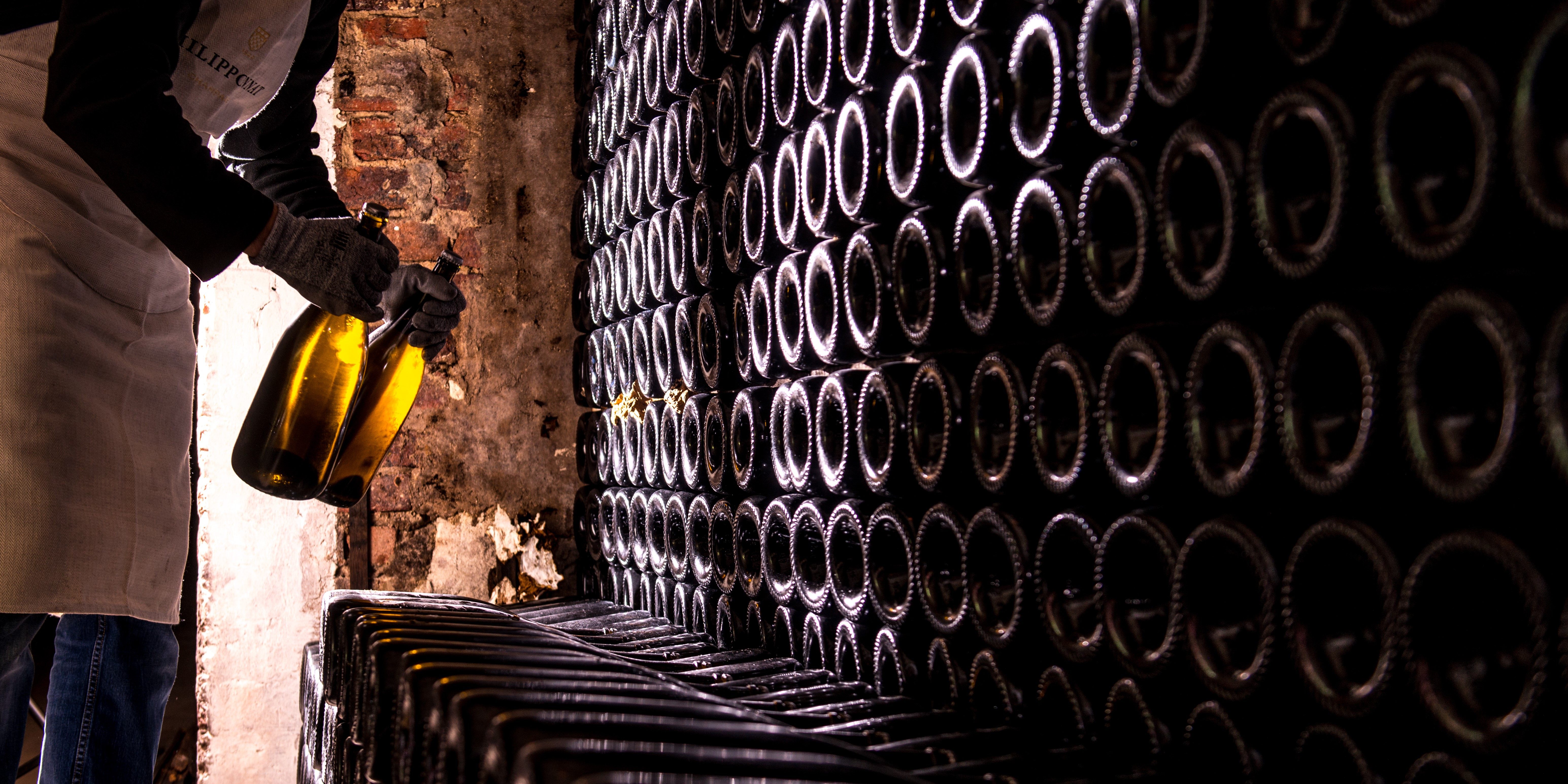
Interview with Florian Bertaud, Philipponnat’s riddler for the past nine years

How did you first come to the Maison?
I had always worked in Champagne. My parents and grandparents, who lived in Mareuil, had vines that I tended from a very young age. I enrolled in a viticulture school at 14, before starting work for my first boss. One day, I felt like seeing something new. I spontaneously sent my CV to Philipponnat, and I was lucky enough to be taken on. I’ve been here for nine years. Now, I wear two hats. I am responsible for riddling, along with my colleagues Valérie and Vincent when I need a hand. I’m also part of Thierry Garnier’s team, the Maison’s Head of Caves, for cellar work, blending and tirage.
What is “riddling”, for which you are Philipponnat’s lead craftsman?
It’s a crucial stage that allows us to remove the yeast deposits (lees) that form in the bottle during the “prise de mousse” (second fermentation in bottle, literally “capturing the bubbles”). The riddling takes about a month. It consists of gradually bringing this deposit down into the neck of the bottle. To go into more detail, the bottles are placed horizontally on racks. Every day, they are manually riddled and turned about 1/8 or 1/4 of a turn while being gradually tilted up to a vertical, upside-down position. Each bottle is “handled” (riddled) 20 or 30 times from when it is placed on the rack (called “pointage”) to when the bottles are collected (“dépointage”) to be disgorged and the lees expelled. The challenge of riddling is greater at Philipponnat as a result of the unusual format of our bottles, which settle differently in the racks, slowing the lees’ descent. This requires a flawless rigour in observing the progress of this deposit all the way to the neck. If in doubt, two additional rotations can be carried out at the end, over two or three more days, for best results.
Which Philipponnat Champagnes are riddled by hand?
The vintage cuvées Clos des Goisses, Clos des Goisses Rosé, 1522, 1522 Rosé, Blanc de Noirs and Grand Blanc are the ones placed on racks and riddled by hand. The House’s deep caves hold enough racks to accommodate 15,000 bottles each month. So we have to riddle year-round: when one batch is finished, it is collected and replaced by a new one. Currently, one portion of the riddling is focused on the 2016 Clos des Goisses, and another on the 1522 cuvée. To riddle that many bottles with quality and precision, you have to have the right touch. It’s all in the hands and the wrist: you have to have dexterity. I learned the technique at a young age, by watching my grandfather.
Why choose to riddle by hand?
These days, gyropallettes can reproduce the riddler’s movements automatically. The main difference between manual and automatic riddling is time: seven days in a gyropallette versus thirty days by hand! Still, at Philipponnat, we hold on to preserving our tradition and our savoir-faire, working by hand, particularly since the cuvées in question age for a very long time. My colleague Elisa, who was my predecessor, dedicated 42 years to this task, riddling these precious vials every day. Visitors enjoy seeing us at work, and they’re always curious to know what we’re doing.



